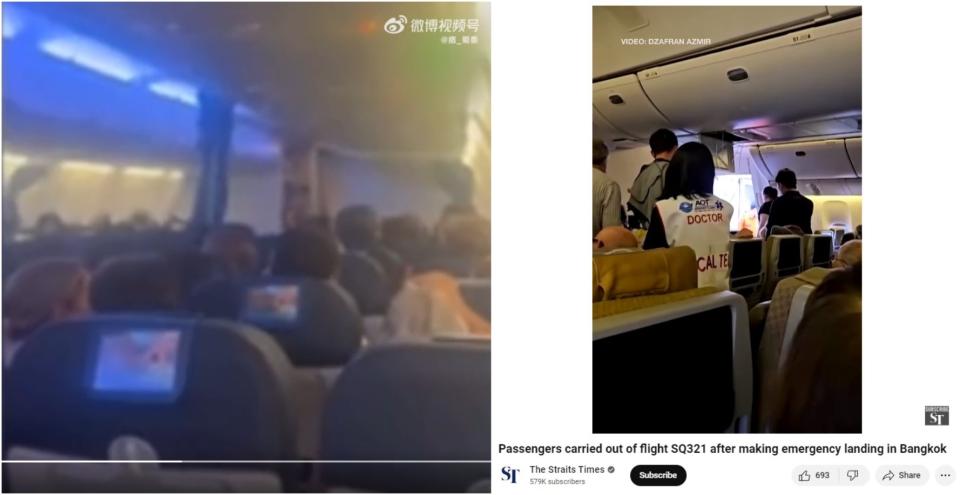The post surfaced hours after Singapore Airlines flight SQ321 from London to Singapore made an emergency landing in Bangkok after hitting severe turbulence, during which an elderly man died and more than 80 were injured.
Passengers on the flight said the plane plunged suddenly with little warning and people were thrown around the cabin so violently that they put dents in the ceiling.
The footage was also shared in YouTube and Facebook posts linking it to the ordeal.
However, the clip is unrelated to the Singapore-bound flight.
Mallorca flight
A reverse image search and keyword searches on Google found the video posted by US television station KLTV 7 on YouTube on August 30, 2023 (archived link).
“WATCH: Passengers scream during extreme turbulence on flight to Majorca,” read the video’s title, using another spelling for the Spanish island.
The plane was forced to land in Alicante in Spain, according to the YouTube video, which credits the footage to “@estelaorts”.
Below is a screenshot comparison between the footage shared in false posts (left) and KLTV 7’s video (right):

Britain’s Independent newspaper also published the video on August 29, 2023 in an article that credited it to Estela Orts (archived link).
The article says Orts, a passenger on the flight, shared the clip as an Instagram Story on August 27, 2023.
The Instagram Story is no longer available on Orts’ account.
A closer analysis of the clip confirms it does not show the Singapore-bound Boeing 777-300ER plane.
The footage shows a single central passenger aisle and overhead baggage compartments featured only above the windows.
However, a video published by Singapore’s Strait Times newspaper that shows a passenger being stretchered off the Singapore-bound plane shows the cabin has two aisles and luggage bins above central rows of passengers (archived link).
Below is a screenshot comparison of the cabin configuration on the Mallorca flight (left) and the Singapore flight (right):

Scientists have long warned that climate change is likely to increase so-called clear air turbulence, which is invisible to radar.
A 2023 study found the annual duration of clear air turbulence increased 17 percent from 1979 to 2020, with the most severe cases increasing more than 50 percent.
Source Agencies


